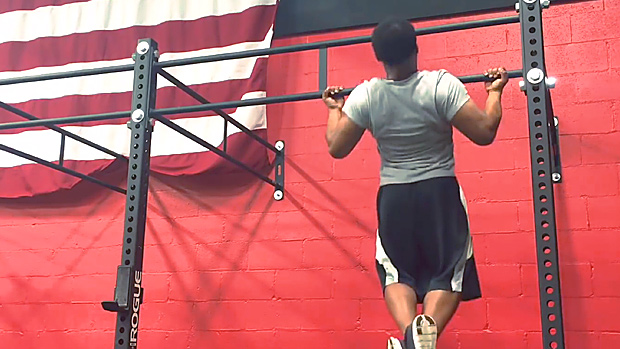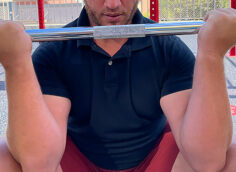When you hear "dead-stop" training, your first thought might be deadlifting, box squatting, and maybe bench pressing off some pins. It's unlikely that lateral raises would be top of mind, but they could be a useful tool for your shoulder development.
- Grab a bench and some dumbbells. Pick a conservative weight, about a quarter less than what you'd use for your standing lateral raise.
- Sit on the bench and rest the dumbbells at arms length. Have a soft bend in your elbows which you'll maintain from start to finish.
- Sit up tall and lock your feet down to create some stability. Contract your delts and begin to pre-load the dumbbells (exactly what you might do with a deadlift where you get the bar "click" without actually lifting).
- Once you've built tension, begin to raise the dumbbells. You can raise directly towards your sides, although I'd recommend raising slightly forward in the scapular plane for better joint centration and shoulder longevity.
- Stop when your upper arms are about horizontal to the floor. Maintain a palms-down grip throughout. If you choose to go higher, switch to a thumbs-up grip.
- Lower back down to the starting position while resisting a sudden drop of the dumbbells on the bench. Try to only lose about 50 percent of the dumbbell weight through the bench while maintaining shoulder tension. In other words, don't totally relax and lose tension at the bottom.
- Pause on the bench for up to two seconds to fully inhibit the stretch reflex. A shorter pause will only inhibit it partially. Your pause-count will affect how much weight you use.
- Repeat for desired reps.
They develop functional hypertrophy.
Dead-stop training has a number of muscle-building benefits, largely by partially inhibiting the stretch reflex that contributes to force production. By inhibiting the muscles' elastic components, only contractile components (myofibrils) can contribute to force production. If you're looking to build functional (myofibrillar) hypertrophy, then dead-stop training can be a highly efficient method.
They help re-establish correct technique.
Dead-stop lateral raises keep your reps honest. They give you a split second at the bottom of each rep to re-establish your positioning and the path of every raise. They can help you raise within a safe and effective range of motion to benefit your long-term shoulder development.
They're shoulder-friendly.
Since performing lateral raises like this stops you from bouncing out of the bottom position, you can get sufficient shoulder stimulation without any unnecessary stress.
It stops a significant load drop.
During a standing lateral raise, you'll lose tension in your shoulders as the dumbbells lower closer to your sides. By avoiding this range of motion completely, you're maintaining tension throughout.
Remember, the dead-stop is a pause and not a tension drop. You'll only let a little of the load rest on the bench. This way you'll maintain a higher level of tension for longer while also keeping important shoulder stabilizers active.

Because of leverage factors, the closer the dumbbells lower to your sides, the lower the tension. During conventional lateral raises, there's a significant drop in tension at the bottom position.
But take a look at the picture. By having a dead-stop near where the tension is reduced, you're making it more challenging since your muscles are having to overcome the inertia brought about by the brief pause.




